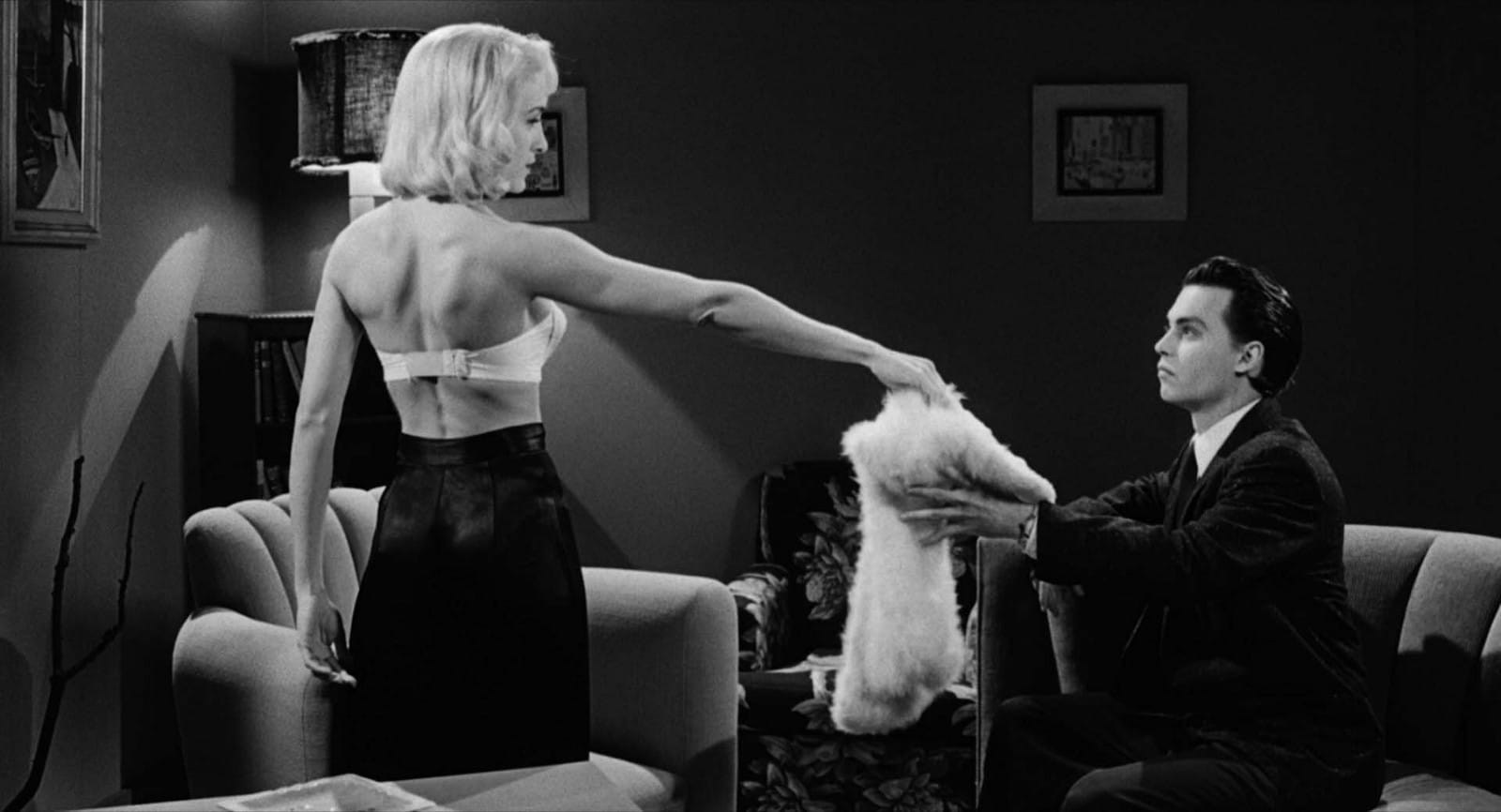Every month, we at The Spool select one Filmmaker of the Month, honoring the life and works of influential auteurs with a singular voice, for good or ill.
With Tim Burton’s Dumbo coming out in just a few weeks, we’ve chosen to dedicate March to Hot Topic’s favored son, and his intriguing, singular body of work.
Ed Wood was three years too late and fifteen years ahead of its time – a celebration of the people who were about to take over the pop culture world, made by a man with a string of hits who had just unknowingly alienated his massive audience. It’s a different story about Hollywood, the flip side of fairytales and dizzying success of movies like A Star Is Born. Ed Wood focuses on the margins of
Written by Scott Alexander and Larry Karaszewski, and starring Johnny Depp as Wood and Martin Landau as Bela Lugosi, Ed Wood isn’t interested in a factual recreation of the man’s life so much as highlighting the DIY counterculture spirit his work later meant to his fans. Set amid the squareness of Eisenhower-era America, a bunch of weirdos creates a community under the watchful eye of The Worst Filmmaker of All Time. Like much of Burton’s output, Ed Wood celebrates these weirdos, warts and all – despite his clear weaknesses as a filmmaker, Wood embodies the boundless enthusiasm, resourcefulness, and creativity to push past whatever obstacles stand in his way.
Ed Wood is like no other movie ever made. It’s a major studio-financed, star-driven picture from the
That camaraderie, specifically the relationship between Wood and Lugosi, gives Ed Wood its beating heart. By the mid-’50s, Bela Lugosi was well past his prime, bitter, broke, and addicted to morphine. But in the film, Wood doesn’t see any of that; he sees the glamour and mystery of the horror movies he grew up loving. The two men become more than friends – in Wood, Lugosi finds someone who treats him with respect and affection, someone who believes he is still a viable film star. And in Lugosi, Wood finds legitimacy, an actual movie star who wants to be in his movies. There’s no judgment between them – Wood doesn’t give Lugosi grief about his temper or addiction, and Lugosi doesn’t say anything about Wood’s terrible productions or cross-dressing. That acceptance and love
Beyond Wood, the hack writer/director, and Lugosi, the washed up star, there’s Wood’s girlfriend Dolores (Sarah Jessica Parker), the terrible actress; Tor Johnson (George “The Animal” Steel), a barely intelligible wrestler turned movie-monster; the droll and gothic monster-movie host Vampira (Lisa Marie); Criswell (Jeffrey “let’s just try to forget he’s in this” Jones), the phony psychic; and Bunny (Bill Murray), Wood’s drag queen friend who mostly just hangs around. Together, with a color blind cinematographer, a few of the worst supporting actors of all time, and whatever hapless amateur the financiers insisted be in the picture, they created some of the most durable and memorable bad movies ever made.
Burton’s work has always had a fascination with kitsch, weirdos and outsiders, so his affection for Wood makes sense. But it’s also interesting in light of just how different the two men’s careers were. Wood was a terminally independent Z-grade filmmaker who never got critical or public attention, and wallowed in obscurity his whole career. Burton, on the other hand, first found work as an animator for Disney, then – after becoming unsatisfied there – went on to immediately work as a feature filmmaker for Warner Brothers. He had access to top-tier collaborators. His films were highly stylized and meticulous, unlike the cheap, haphazard junk Wood produced.
Ed Wood is like no other movie ever made.
It’s easy at first glance to say that Burton saw himself in Wood, and I think there’s truth in that idea. But Burton was also everything Wood wasn’t and wished to be. When Ed Wood was released in 1994, Burton was riding a wave of virtually unprecedented critical and commercial success making dazzling, original, blockbuster movies out of the weirdest ideas.
And then everything changed.
It’s not that Ed Wood wasn’t a hit; it’s that it didn’t even make 6 million dollars. It got good reviews and won some awards, but no one saw it. Which, again, isn’t that big a deal – it was a small movie anyway, made more for posterity than blockbuster box-office. But then, two years later, Burton’s follow-up movie Mars Attacks tanked too, and that one didn’t even get good reviews! After that, something shifted, and Burton became significantly less ambitious. He stuck mainly to remakes and reboots and the occasional TV or stage adaptation. Some were good, some weren’t, but none of them ever had that mad spark of genius that ran through his early work and shone brightest in Ed Wood.
What happened? Well, for starters, after the astonishing success of Batman in 1989, Warner Brothers gave Burton a much longer leash for Batman Returns in ’92, and the result was a profoundly dark movie about loss and pain and sexual confusion that left much of its audience actively upset. The movie-going public trusted Burton and would have followed him anywhere on his strange journey because they had a good time doing it, but Batman Returns made a lot of people feel bad. I’m not sure they were willing to give him another chance after that.

But that’s fitting in a way. A movie about such beautiful losers reaching a wide audience might rob it of some of its luster, tarnish its sincerity. And it couldn’t have come out now and been authentic in the age of mainstream geek culture. We now know the toxicity that can sometimes come from film lovers who obsess over their childhood favorites, and how easily a storyteller can choose nostalgia and shout-outs over creativity to ensure success. Ed Wood wasn’t made for money, or for easy cool points; it was made because the filmmakers loved Wood’s movies, and they loved the gonzo spirit he represented, fighting the odds and pushing forward. Because to not try would be to give up, and that’s the same as dying.
Ed Wood ends moments after the premiere of Plan 9 From Outer Space, Wood’s most famous film (and, arguably, his masterpiece). Ed, flush with triumph, runs out of the theater with his girlfriend Kathy O’Hara (Patricia Arquette) into a rare LA rainstorm. He proposes marriage and says they can drive to Vegas that night. Kathy reminds him that the top to his convertible is stuck in retraction and they’ll get soaked. “Phooey,” Wood says, “It’s only a five-hour drive and it’ll probably stop before we get to the desert. Heck, it’ll probably stop by the time we get around the corner. Let’s go!”
There would be a lot of rain in both Wood and Burton’s futures, but they both kept going, kept working, and they both made lasting contributions to the art they loved. It may not have ever gotten any better than that for either of them, but that was pretty damn good.

